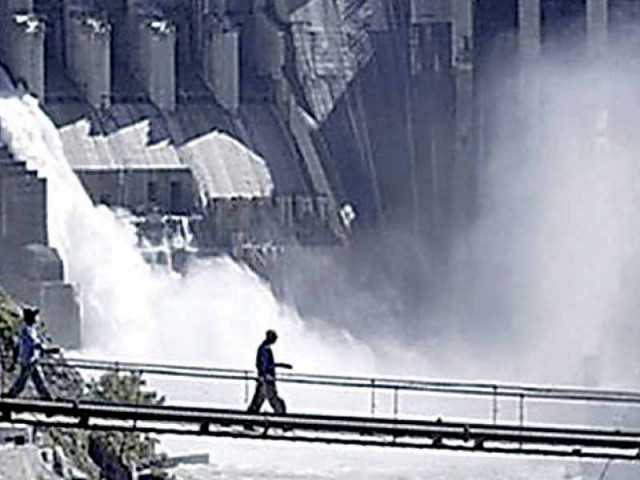Looking for a way out through the Kalabagh Dam
Seminar stresses importance of project for entire country.

The Kalabagh Dam could produce up to 15 billion units of power every year at an average cost of Rs3 to 5 per kwh within the next five years. PHOTO: FILE
A series of speeches and lectures on “Economic Growth through Kalabagh Dam” summarised the importance of the project, stressing that it has the potential to bring an end to the load-shedding ordeal and increase industrial output by more than $5 billion a year.
It was also stated in the seminar, jointly organised by the Lahore Chamber of Commerce and Industry (LCCI) and the Sind Tas Water Council here on Saturday, that the dam could help in eradicating rural poverty in Pakistan, help in increasing agricultural output by $10 billion a year and benefit all the provinces.
The speakers, which included former finance minister Dr Salman Shah and former chief minister Khyber-Pakhtunkhwa Shamsul Mulk, said that the Kalabagh Dam could produce up to 15 billion units of power every year at an average cost of Rs3 to 5 per kilowatt hour within the next five years. The annual cost of the endeavour will be around Rs22 billion. The option will save the economy billions of rupees, reducing the current account deficit, boost foreign reserves and strengthen the rupee.
In a telephonic address, Mulk said that he had been stressing on the issue but to no avail. “The dam is absolutely essential to irrigate 800,000 acres of cultivable land that is located 100-150 feet above the Indus river level in NWFP,” said Mulk. “This land can only be brought under cultivation if the river level is raised that is only possible if Kalabagh Dam is built.
“The other alternative is to pump the water which is very costly.”
Meanwhile, Dr Shah said that the Kalabagh dam is the ‘only project in Pakistan that can make power affordable for the masses in a short period of five years’. “It is also the only project that can make the economy competitive and sustainable without the crutches of bailouts and loss of sovereignty,” said Shah.
Meanwhile, LCCI President Engineer Sohail Lashari urged the government to focus on construction of water reservoirs in the country. “The country had already suffered a huge financial loss due to unavailability of electricity, gas but it is very unfortunate that Kalabagh Dam had been labelled as a political issue,” said Lashari. “It is not a political issue at all. It’s an economic issue and merits priority keeping in view the economic conditions. “Balochistan and Sindh would be the biggest beneficiary of the Kalabagh Dam.”
Dr Ibrahim Mughal added that the dam’s construction would help in bringing an additional 2 million acres of land under irrigation in Sindh, Badin, Thatta and other districts, while 800,000 acres in Dera Ismail Khan and Bannu in Khyber-Pakhtunkhawa. It would also help in irrigating 700,000 acres in Balochistan and also provide essential water to Punjab.
Published in The Express Tribune, November 24th, 2013.
Like Business on Facebook, follow @TribuneBiz on Twitter to stay informed and join in the conversation.









1733130350-0/Untitled-design-(76)1733130350-0-208x130.webp)









COMMENTS
Comments are moderated and generally will be posted if they are on-topic and not abusive.
For more information, please see our Comments FAQ